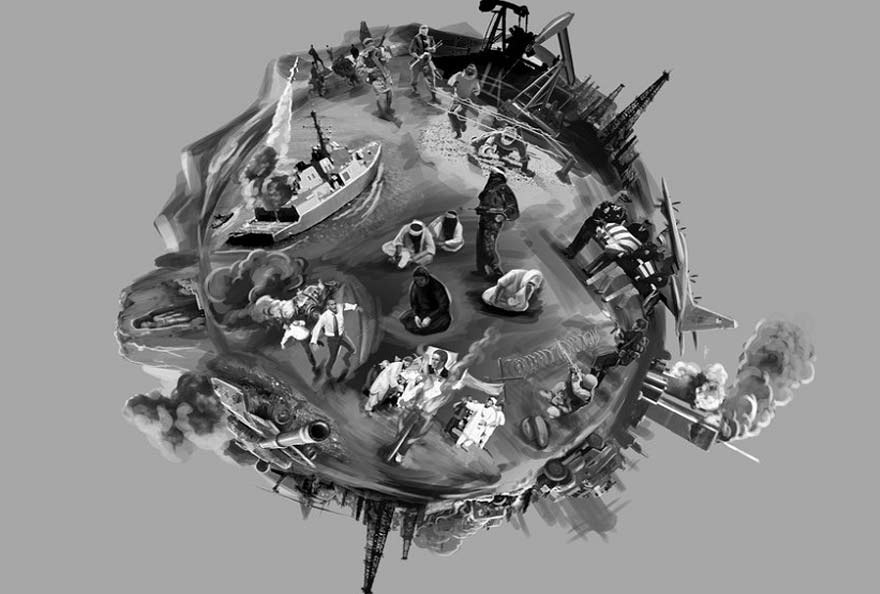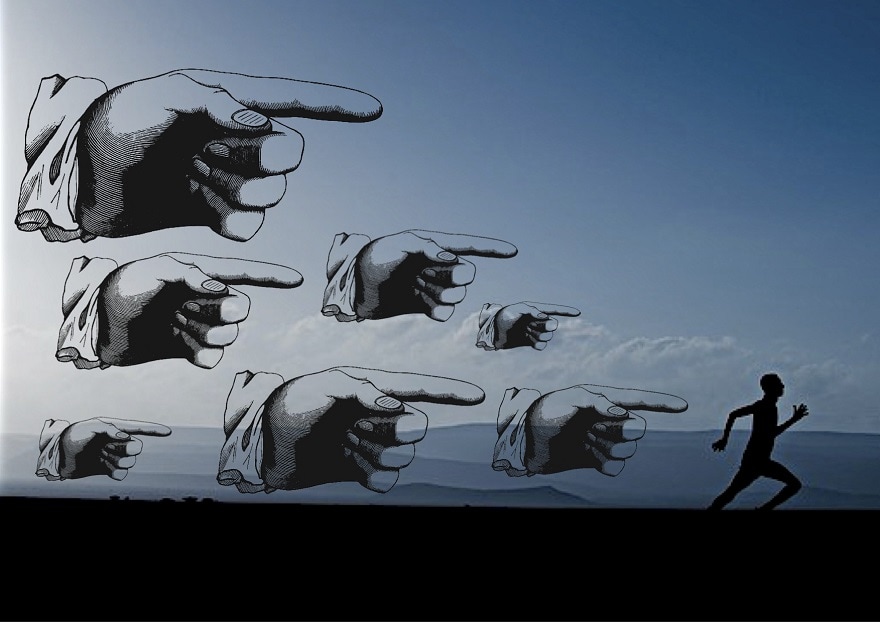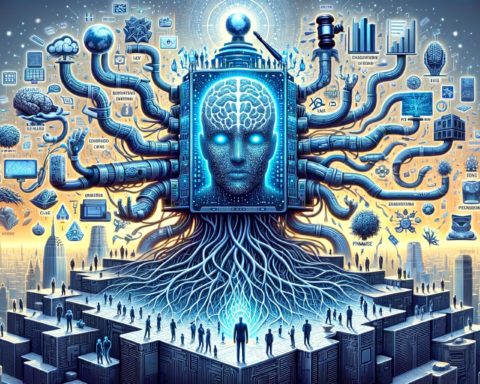How does one go from a radical or zealous mentality to a combat position or even terrorist engagement? This was the question asked by one of the last seminars of the Collège des Bernardins last October. Antoine Arjakovsky and Jacques Huntzinger took part in this seminar to try to answer the historical, anthropological and psychological aspects of the paths of the various fundamentalisms.
Antoine ArjakovskySince September 2011, he has been co-directing with Antoine de Romanet the "Society, Liberty, Peace" department of the research centre of the Collège des Bernardins in Paris, which is studying the relationship between states, religions and secularism. Jacques HuntzingerThe former Ambassador of Israel, is today Secretary General of the Mediterranean Cultural Workshops, initiated by the Elysée Palace and the Quai d'Orsay and which participate in the Union for the Mediterranean project. They were the main speakers in this circle of analysis to try to give us a precise insight into those we in the West call extremists.
The notion of "current" is very particular in Islam.
Because the Prophet Mohammed was also a "king", building a state in Medina, and because his successors, the Caliphs, and their opponents will engage in politics in the name of religion, "politico-religious" currents will emerge that will be more political than religious.
The formation of currents in Islam will occur at three moments in its history. In the 7th century, at the time of the succession of the Prophet, then in the 9th century at the time of the constitution of Sunni Orthodoxy, and finally in the 19th and 20th centuries with the shock of the meeting of the Arab world with modernity and European power.
In the 7th century, the succession of the Prophet at the head of the young Islamic state, created in Madinah and enlarged to include the new Arab empire, would give rise to fierce competition between the family of the Prophet, represented by Ali, his cousin and son-in-law, supported by both Madinah and the radical warriors, and the aristocracy of Mecca represented by the Umayyad clan. Out of this war of succession came the great initial currents of Islam. The Sunnis formed the majority current from the Makkan aristocracy, who supported a dynastic caliphate to be built by the Umayyads and Abbasids.
Shi'ism, a minority current of Ali's followers, defeated militarily in Kerbala, concentrated in Iraq, the cradle of Shi'ism, will build a theology based on the imanate opposed to the Caliphate and on the waiting and the return of the hidden iman. Shi'ism will become much later, in the 16th century, the official religion of Persia from a political decision of the new Persian dynasty decided to distinguish itself from the Sunnism of the Arab world. The contemporary era is the great revenge of Shiism with Khomeini's Islamic revolution of 1979 and its scope in the Islamic world but especially with the Shiite reconquest of Iraq in the aftermath of the American action in Iraq in 2003. It is the late revenge of the defeat of Kerbala felt as such by the Sunni world.
The third current, coming from the 7th century fitna, will be Kharidjism, the "rebellious separatists", adepts of armed violence against all ungodly leaders, refusing any political compromise, ancestors of the radicals of Islam and the jihadists.
The memory of this early period of Islam is complete in modern and contemporary Islam.
In the 9th century, within Sunnism, the political defence of the reigning dynasty of the Abbasids in the face of the challenges of the anti-caliphate minority currents involved the construction of a religious orthodoxy based on the tradition of the prophet, the sunna. This is once again a legitimation of politics by the religious codified in an orthodoxy called Sunnism, which groups together the "followers of the sunna of the Prophet". This construction will be the matrix of the great "theological" currents of Sunni Islam. These three main currents of Sunnism are mutazilism, hanbalism and doggedness.
Mutazilism, the enlightened current of Sunni Islam, influenced by Greek philosophy, advocates a reading of the sacred texts based on the combination of faith and reason, affirms man's freedom from God and proposes a speculative theology. Mutazilism, through its arrogance and clumsiness, will be rejected by the people from the struggle led by the current of Hanbalism founded by Ibn Hanbal, one of the creators of the sunnah. Ibn Hanbal can be considered as the founder of Sunni fundamentalism on the basis of the affirmation of a strict return to the sole sources and foundations of the Koran and the Sunna and a literary reading of the sacred texts.
This battle lost by mutazilism against hanbalism will finally lead the Abbasid caliphs to rally to a synthesis drawn from relentlessness, named after Al Achari, the great theologian of Baghdad who passed from mutazilism to a temperate conservatism. Fierce determination remains to this day the central path of Sunni Islam. It is essentially based on the predominance of the Sunna and its codified interpretation by the Ulemas, which means the rejection of open theology nourished by reason. The popular and then political rejection of the Mutazilite current is a key moment in the history of Sunni Islam.
The third moment in the formation of Sunni Islamic currents will be the period of the 19th and 20th centuries in which the Arab world will "meet" Europe, a powerful, colonial and modernized Europe. The Arab world will enter into a great debate on the possible conciliation between its identity and European modernity.
What are these great currents?
First of all, Wahabism, which appeared in the 18th century in the Arabian desert, is a fundamentalist current preaching a rigorous and puritanical Islam in the lineage of Hanbalism. It will become the banner of the future kingdom erected by the Saud tribe throughout Arabia.
Salafism, or rather the Salafists, inherited from Hanbalism and reinvigorated by Wahabism, asserts that only a return to the sources of Islam will allow the survival of the Arab world and that Islamic law must be established in all its original purity. Salafism is purely religious and quietist for some, such as the tablighs or those close to Saudi Wahabism, but it has become political for those who have entered the political arena in favour of building an Islamic state, such as the Egyptian Salafist Party. "Nour".
And there is also a third variant of Salafism, revolutionary Salafism, the one that employs armed action and which has led to Jiadism.
Political Islamism is something else again. It is the work of the Muslim Brotherhood created in the 1920s in Egypt in reaction to the British colonial presence and Western modernity. The founder of the Muslim Brotherhood, Hassan el Banna, wanted to transform religion into a modern political ideology through the creation of a party and a reform programme inspired by religion.
The Egyptian Brotherhood has swarmed into many countries, such as Tunisia, Morocco, Jordan or Syria, which have Islamic parties from the Muslim Brotherhood but whose trajectories are very differentiated.
Finally, there is the enlightened reformist current of neo-mutazilism, inherited from the thought of Mohamed Abdouh, Grand Mufti of Egypt and Rector of the University of El Azahr at the beginning of the 20th century. Neo-mutazilism calls for the reopening of the theological and juridical debate based on reason and also for "concordism" between Islam and Western Europe. This current, like the mutazilism of the 7th century, is very much in the minority in official Islam.
Today, one is struck by the great similarity between the initial currents of Sunni Islam and the modern currents as well as by the great stability of the weighting between the majority current conservative inherited from the relentlessness, the minority but active currents of Salafism and political Islamism and the rational and open current constantly marginalized.
But the great debate on the future of Islam may be reopening...
The new forms of the destructive impulse
From Al Qaeda to Daech, one thing is clear: terrorism and Jihadism have innovated by giving new forms to the impulse of destruction, which resides in every human being. It is in the specific impulsive mobilization carried out by the propaganda of these groups that the origin of this unprecedented violence lies.
In order to grasp the possibility, we must therefore understand how one goes from adhering to an ideology to committing a murderous act. The transgression of the ban on killing is usually strictly regulated in human societies. In inter-state wars, it is the political authority that commands this transgression. In terrorism, even if there are recruitment networks, membership is based on personal initiative. The dogma of Al-Qaeda formulated by Al-Zawahiri in 2002 is taken up by the Islamic State group: jihad, even when accompanied, aided, coached and financed, is an individual matter. In spite of recruitment, the lifting of the ban on killing must be rooted in subjectivity.
To produce this effect, the role of religion seems central. However, it is not religion as such that is summoned, but its political instrumentalisation, with a view to combat. All religion calls for a faculty of interpretation and questioning incompatible with terrorist activism. Moreover, religious adherence to a dogma transformed into a reserve of slogans constitutes a formidable recruitment tool because it takes up the subject of the "idolatry of life," characteristic of Westernized societies in the eyes of Islamists.
This general condition of the passage to the act is declined in three subconditions: the production of a "hallucinatory" commandment, the revelation of the gap of the self thanks to the maintenance of a state traumatic and the promise of merging into a larger whole, under a model of authority more maternal than paternal.
When, in conventional armies, soldiers are given a dispensation to kill, the subject within them can rely on this order to possibly remain divided in his relationship to the murderous act. Once peace is restored, one can complain about the stupidity of war. But in terrorism, the command must be relayed by the subject himself. Something akin to psychosis here, outside of any psychotic structure of the subject, impossible to assume in young recruits of Al Qaeda or Daech. Now, we know that in psychosis, the passage to the murderous act occurs in a state of hallucination in which the subject receives the command to kill, in an invocative hallucination, a voice. It is therefore necessary to produce a kind of artificial paranoia, which explains the presence of conspiracy themes, of a rigorous construction of the enemy, of the call for revenge. In this way the subject can obey by himself while cancelling himself out as a subject. The paradise sought is in fact nothing other than the abolition of subjectivity, desired by the subject himself.
Relieved of the vagaries of his desire, he can give himself over to the impulses, and first of all to the death drive. He is sustained in a deadly impulse by the staging of past terrorist acts, in the occurrence of decapitations. The passage to the murderous act requires the impulsive mobilization that makes nothing, destruction, a clean slate, appear as emergencies.
The Internet plays a decisive role in this process, not only because of the traumatic content of the scenes viewed, but also because of the temporality of immediacy that the mode of communication on the Internet offers. social networks allows. All young jihadists go through the internet. Many of them are recruited on social networks, others go to jihadist sites after a meeting in prison or in life. The subject is thus put in a state of artificial trauma.
In the resulting death drive aspiration, not only is it tending towards the destruction of everything and the production of the "nothing" characteristic of the nihilist transformation of war and the politics, but it becomes capable of causing death by body parts (severed heads of decapitated people, or explosions of terrorists and their victims in suicide attacks).
This way of killing marks the return to an archaic state of libido. It is in this archaic libido that the promise of an undivided enjoyment in a great whole takes meaning, which is as much that of the crowd that supports the subjective resignation of the jihadist, as that of the utopian community targeted by this political messianism, as that of the great whole of the universe, the eternal symbol of the mother.
Antoine Arjakovsky pointed out that the four poles of orthodoxy are found in other religions. Sunnism and Shiism can be in the law and justice pole, Karidjism in the memory pole, and Sufism can be in the glory pole. He wonders about the possibility of making a typology from the psychology proposed in connection with death and sexual pathologies. Could certain poles be associated with poles of identity?
Antoine de Romanet stressed the fruitfulness of the distinction made between war, with an army and an end, and terrorism, with an army but without an end, and the interest of the relationship between army and police.
Could Sufism, which is not a current of Islam, have a certain peacemaking role?
Jacques Huntzinger clearly states that Sufism has been an important current since the origins of Islam. It appears in Sunnism and Shiism. It is a current that is by definition anti-fundamentalist, which means going to the heart of the sunna, of tradition through contemplation. There is even a very esoteric dimension. So it is the opening of an esoteric path towards the contemplation of God, which is intended to bring us as close to God as possible if we can approach God in Islam, which is not the case. There are, however, Sufist experiences of profound inner transformation through contemplation that can be achieved through esotericism. This is the path that appears to be the most positive in terms of purified Islam, but it is also the path of interiority that is opposed to a certain exteriority that is found in Sunni orthopraxis. If Sufism has the right to be cited among the Shiites, it has difficulty being legitimized by Sunnism. Sufism thus lives in a differentiated way in its relations with the different currents of Islam.
Concerning the relationship between Jiadism, Islamism and Salafism, it should be pointed out that Jihadism has from its origin two meanings, the small and the big Jihad. The great jihad is the path to internal reform. The small jihad is that of war, first defensive then offensive, which can be compared to the theory of war just in the name of defending the truth against the impious. In the beginning, the jihad is the war against the apostates, against those who have abandoned the Sunni tradition, i.e. the Shiites, and created other religions. Religion becomes a party. It continues today.
Political Islamism is essentially different. It is an ambiguous but real expression of a modernist will of Islam. Religion becomes a political ideology with a party, the Muslim Brotherhood, a programme and the exercise of the conquest of power.
A branch of political Islamism has deviated towards a radical and violent Islamism and joined Jihadism. In Salafism there's everything you want. There is therefore a porosity between political Islamism, Salafism and Jihadism, between currents that each have their own trajectory and their own specificity, which explains their complexity.
Al Qaeda and Daech cannot be compared. Al Qaeda is an organization based on political theology. Daech is different because it is a geo-political opportunity fabricated by former Iraqi army officers who were ousted as a result of Iraqi American policy and who reacted to their Sunni identity and made a pact with certain ideologues who had worked with Al Qaeda and who returned home. Daech is a conglomerate. There is a political component related to the history of Iraq and an opportunistic component.
Concerning literalism in Islam, it should be remembered that literalism is present in all the great books from the beginning. The particularity of Islam is that it is created very quickly for political reasons. The Caliph relies on a reading of the Koran and tradition. Therefore, if you want to be in opposition to the Caliph, you have to have another literal reading. Such a position that was present under the caliphates is found today. Fundamentalists are found in the "Golden Age", Mohammed and the first two caliphs.
On psychological issues, Hélène L'Heuillet, Lecturer in Political Philosophy and Ethics at the University of Paris-Sorbonne, considers that our societies are not the norm, apart from pathology. Our societies have helped the subjective division of adolescents. She says she is convinced that a new language is needed to help teenagers understand conflict.
Concerning games, she recalls that Mohamed Merah spent a lot of his time with video games because they ensure the impulsive mobilization of all tensions.
She also stresses the need for speech to support the subjective division of adolescents, otherwise they will fall into exhilarating and dangerous aspirations.
There are possible conflicts in politics and there is the impulse of destruction among young people who put all their impulses to kill and associations that relay them. The theses of Jacques Derrida and Jean Baudrillard are not relevant because they play on a mirror effect.
His intention is not to pathologize the jiad. What she's saying is that all such movements can generate pathology. Jihad has a logic of civil war and the risk must be identified.
On political issues, Hélène L'Heuillet pointed out that the Islamic state wanted to compete with Al Qaeda by confiscating a territory without the intention of seeking recognition as a state by the concert of nations. Its institutions are, moreover, rather weak. The morality applied is moreover linked to the vacancy of the institutions. War and terrorism are two different things. War is waged by states that have armies, which presupposes consultation, whereas terrorism is irregular fighting. Terrorism is becoming the contemporary form of warfare that is not under control and states are therefore not armed to lead the fight.
Some aspects may also be related to a civil war logic
If a rapprochement can be made with Nazism through certain aspects, in particular nihilism, crowd effects and maternal power, a difference must however be noted. The conception of identity differs since in Nazism there is the idea of pure filiation whereas in Jiadism purity is outside filiation. Filiation is reconstructed with a transnationalism that ensures greater effectiveness than Nazism since the power of extension is greater because the reconstruction of a new identity is possible.
Concerning a possible rapprochement with Russian terrorism, it is true that one can make a connection with Russian nihilism, which may be an unconscious source of current nihilism. The young Lenin built his commitment against anarchism. Today we're back to anarchism. The difference is that in jiadism there is no party phenomenon. Everyone can have his own project.
The individualization of Jiadism is a fundamental phenomenon which is the opposite of the Bolshevick position. The ways of killing are also new.
Doubts can be raised about a possible rapprochement between Daech and Al-Qaeda. While it may be true that Daech would not exist without Al-Qaeda, doubts may be raised about such a rapprochement. There is, in fact, a more important filiation than the competition between the cells would have us believe. Everywhere there is science, but it is quickly lost on purpose.
Source : ©Pôle de Recherche Collège des Bernardins - October 2015












